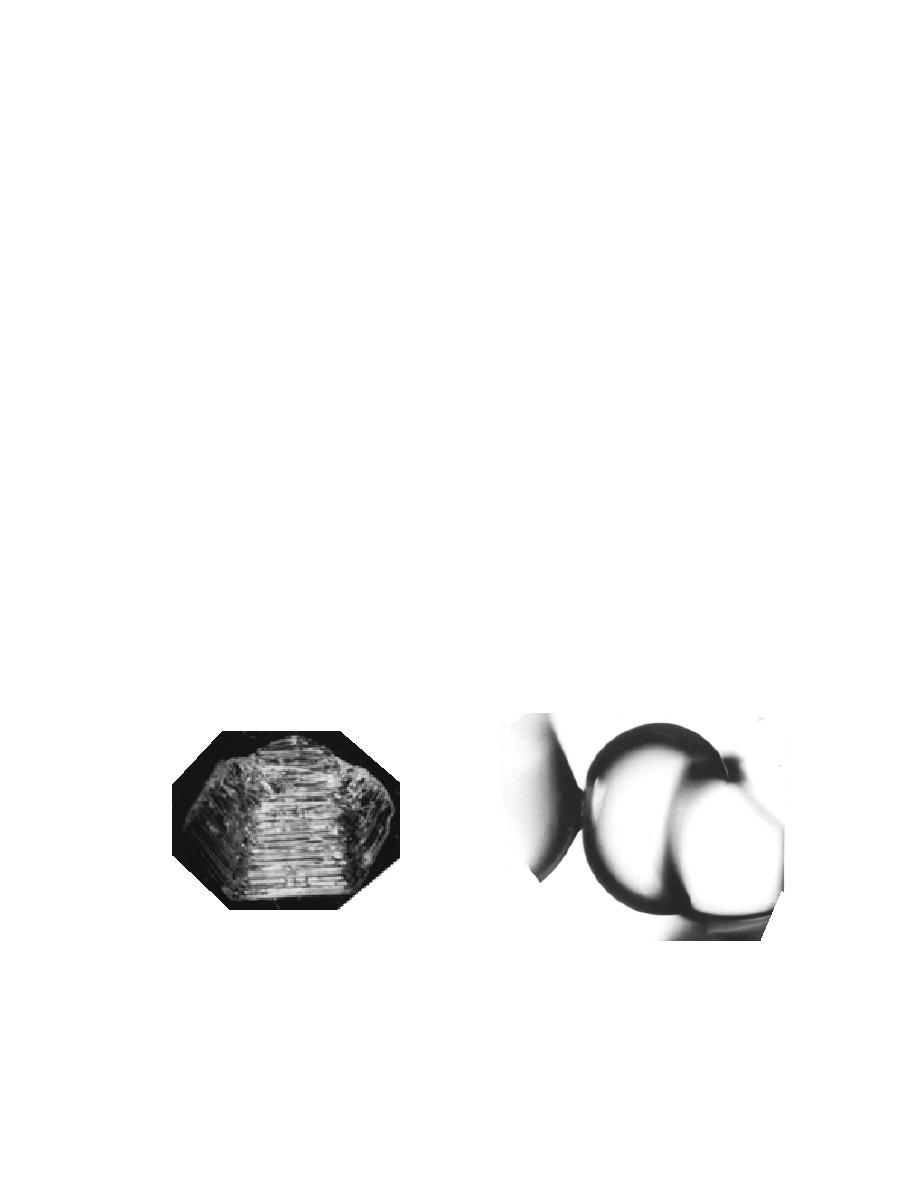
growth of snow grains, although Sturm (1991)
DRY SNOW
has observed the various stages of the growth of
The most studied case of sintering in snow is
depth hoar.
that of well-rounded grains in dry snow where
the grains grow slowly while they build inter-
Rounded grains
granular bonds (e.g., Kingery 1960, Kuroiwa 1962,
Rounded grains grow in dry snow at high den-
Hobbs and Mason 1964). The bonds have long
sities and/or low temperature gradients in the
been described as necks with a concave geometry
snow cover. Figure 6 shows a bond between two
(see Fig. 4) where the growth of the bonds is
rounded grains that are the "equilibrium form" of
driven by vapor pressure differences over the con-
the ice crystal (Colbeck 1983a). This photograph
vex (grain) and concave (bond) surfaces. Although
was taken to show the grains, not the bond, and
this assumption about the geometry is supported
thus the bond is not fully visible in the photo-
by few observations, it is common to assume this
graph. However, the grain-boundary groove is
geometry in the sintering of many materials (e.g.,
visible along with a feature that I have observed
Swinkels and Ashby 1981, Moya et al. 1987, Lenel
in all of my laboratory observations of the growth
1992). Figure 4 shows that it is the appropriate
of bonds between grains: one of the ice grains
geometry for a noncrystalline material, but this
reshapes itself to form an elongated neck at the
geometry would not seem possible for a crystal-
contact but the other grain retains a much more
line material because, at least at slow rates of
sphere-like shape adjacent to the contact. Thus, a
growth, the equilibrium form of the crystal must
distinct dissymmetry tends to develop at the
evolve, and that requires the presence of a grain-
contact, probably due to the different crystallo-
boundary groove at the crystalline boundary.
graphic orientations of the two crystals.
The rapid growth of faceted grains, depth hoar
The growth process for all types of snow grains
being the extreme form (see Fig. 5), is of equal
in dry snow was described by Yosida et al. (1955)
interest to the case of the slower-growing rounded
as "the hand-to-hand delivery of water vapor"
grains. When rapid growth occurs, the rounded
because water vapor migrates through the snow
grains are consumed, leaving poorly bonded, fac-
cover from the warmer part to the colder part,
eted grains that do not sinter rapidly because of
which is usually from the lower layers to the
their large size and because their rapid growth
upper. It does so by the step-by-step conveyance
leaves little time for sintering. They do sinter once
of water from each ice grain to its coldest neigh-
the rapid growth slows, but they sinter slowly
bor. This process enhances the rate of vapor diffu-
because of their large size. I know of no direct
sion for two reasons. First, the vapor diffuses
observations of the bonds formed during rapid
across the pores only, so the flow path is short-
Figure 5. Depth hoar, the extreme case
of faceted crystals growing in dry snow
Figure 6. Rounded grains, which grow at low
at high growth rates due to large tem-
growth rates in snow. They sinter, giving the
perature gradients. These are poorly
snow a slab strength. This shows a newly formed
sintered because their formation con-
bond with a sharp grain boundary groove angle.
sumes the well-sintered, rounded
The neck on one grain only is not uncommon.
grains, and large grains sinter slowly.
4



 Previous Page
Previous Page
